It is well known that cacti can do well in hot, dry desert habitats. But what makes these thorny plants so good at living in places where other plants struggle? The answer lies in their unique structures and adaptations. Let us take a close look at the different parts that make up a cactus plant.
The Stem: The Core of the Cactus
The stem of a cactus plant stands out the most. It does photosynthesis and stores water, replacing the leaves and being the main part of the plant that does the things that the plant needs to live. Cactus stems have a number of adaptations:
-
Thick and succulent – The stem is composed of tissues specially designed to store large amounts of water. This provides reserves to survive long dry periods.
-
Different shapes—Stems can be cylinders, flattened ovals, or spheres, all of which are good at storing water.
-
Ribs, tubercles, and ridges: These bumps make the surface area bigger, let the plant expand and contract, and direct heavy rain to the roots.
-
Waxy coating – The outer layer has a waxy cuticle that seals in moisture and prevents evaporation.
Areoles: Key Points of Growth
Dotting the stem are structures unique to cacti called areoles. These small, cushion-like mounds are major points from which new growth emerges. Spines, flowers, leaves, and branches sprout from areoles. They often appear in clusters and their size, shape and density varies between cactus species.
Spines: Multipurpose Protective Structures
The spines of a cactus are highly modified leaves emanating from the areoles. Though sharp and dangerous, they serve important functions
-
Protection – Deterring animals from eating the juicy stem and conserving the plant’s resources.
-
Shade provision – Spines cast small shadows, lowering stem temperature and water loss.
-
Moisture gathering – Spines promote condensation of moisture from the air.
-
Varied morphology – From needles to hooks, fixed to detachable, spines display incredible diversity. Some cacti also have fine hairs or glochids for further protection.
Roots: Built to Absorb in the Desert
Cactus roots have developed as an efficient means of gathering precious water in dry environments. Features include:
-
Shallow – Close to the surface to quickly absorb rainfall before it evaporates.
-
Widespreading – Covering a large area to collect moisture from even light rains.
-
Fibrous – A network of fine hair-like rootlets efficiently take up available water.
-
Taproot – In some species a long vertical taproot can reach deep moisture.
Flowers and Fruit: Vibrant Reproductive Structures
Though adapted to the desert, cactus flowers are wonderfully showy. The fruits play a key role in seed dispersal:
-
Large, colorful flowers – Produce nectar that attract pollinators. Shades like red, orange, pink and white.
-
Developing ovary forms the fruit – After pollination the ovary matures into a fleshy, berry-like fruit bearing many seeds.
-
Seed-filled nutritious fruit – Attracts desert animals which then disperse the seeds through their droppings. Some cactus fruits are edible, like prickly pear.
Other Specialized Adaptations
Beyond the basic structures, some cacti have unique modifications to aid their survival, such as:
-
Flattened stems in epiphytic cacti help absorb moisture while clinging to branches.
-
Giant taproots in huge columnar cacti provide anchorage and access to deep groundwater.
-
Camouflage coloring blended into the desert environment.
-
Trichomes, fine hairs on the epidermis, reflect sunlight and reduce airflow over the stem.
Varied Growth Forms Add Diversity
The range of cactus shapes and sizes adds to their charm. Growth habits include:
-
Towering columns up to 40 feet tall.
-
Clusters of spherical or cylindrical stems.
-
Low-growing mats spreading across the ground.
-
Epiphytic vines with trailing or hanging stems.
-
Shrubs composed of oval segments.
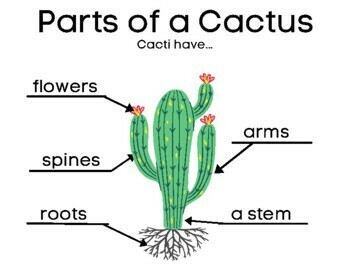
Flowers (Buds) – Prelude to Blossoms
Before we can admire the striking blossoms of the many cactus species, they undergo an intricate developmental stage known as flower budding – laying the foundation for their stunning blooms. During this time, a small structure called the floral meristem forms at the tip of a cactus stem or branch. This meristem then undergoes differentiation, organising into distinct parts that will eventually form the mature flower. These immature structures represent the future flowers that will eventually open to attract pollinators.
Environmental conditions, genetics, and hormonal signals within the plant all play a big role in the process of flower buds forming. During their growth phase, these tiny structures get bigger and smaller depending on the species and outside factors. Eventually, they open up into the incredibly beautiful flowers that growers love.

Exploring the Anatomy of a Cactus
The most prominent and essential part of a cactus is the stem. Cacti have developed thick, fleshy stems that carry out photosynthesis and energy storage unlike many other plants, which rely on their leaves for these functions.
There is usually a tough layer of skin on cactus stems that keeps water from evaporating. Take for example, the saguaro cactus found in Arizona’s Sonoran Desert. It has the capability to store water within its stems, enabling it to survive extended periods of drought without relying on rainfall.

Cacti have stems that greatly range in size and shape. The saguaro cactus can reach a towering height of up to fifty feet and has a distinctive upright columnar shape. Other cacti, like the ball cactus, are much smaller and have a round, ball-like shape. Some cacti such as the prickly pear have flat, paddle-like stems. This variety in stem shape enables cacti to adapt and thrive in a multitude of environments.
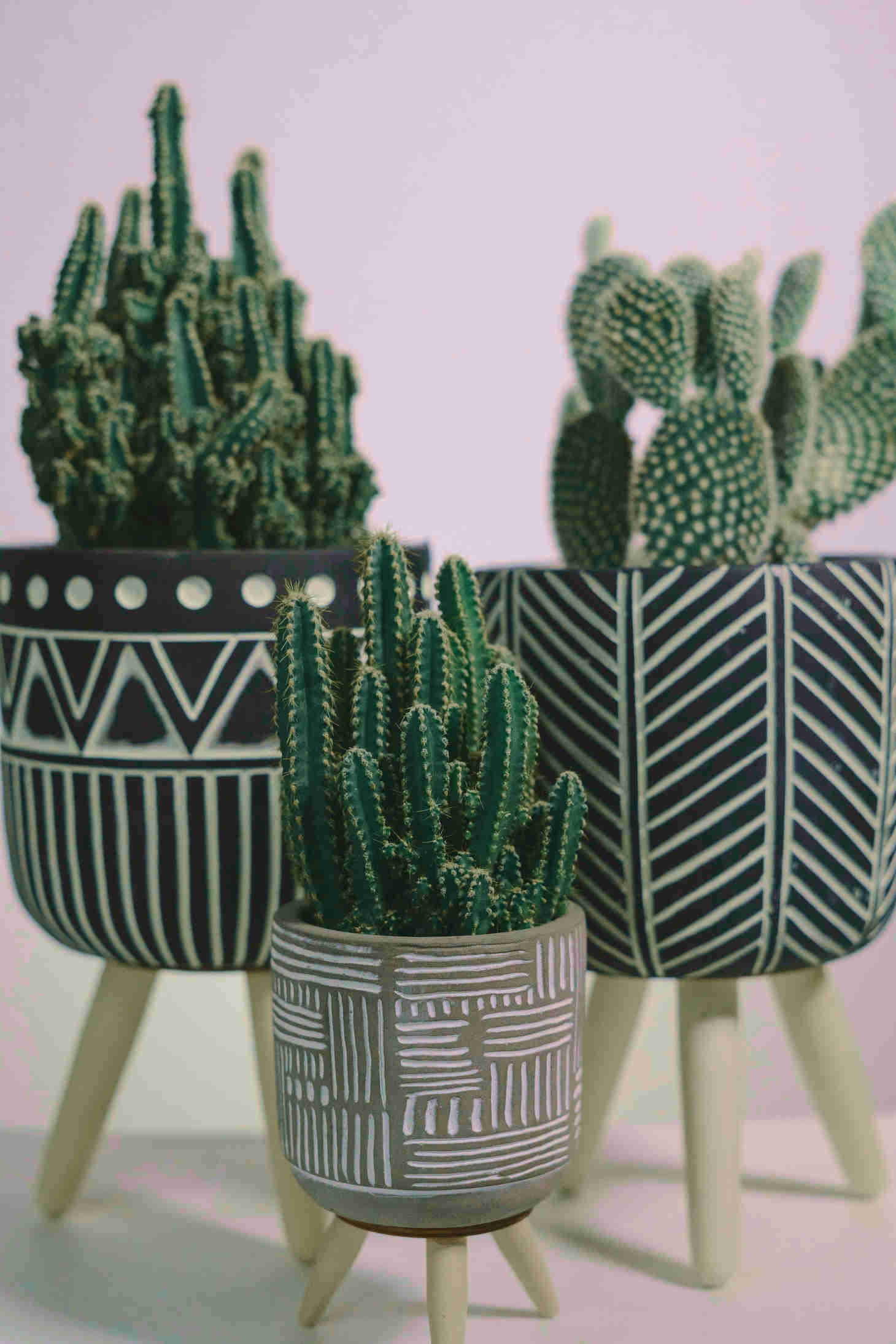
Areoles are modified branches which appear as tiny bumps on the surface of a cactus stem. They play a significant role in the anatomy of the cactus since the spines, flowers, and new growth of the plant all emerge from these tiny structures. The presence of areoles is the defining feature of a cacti from other succulent plants.
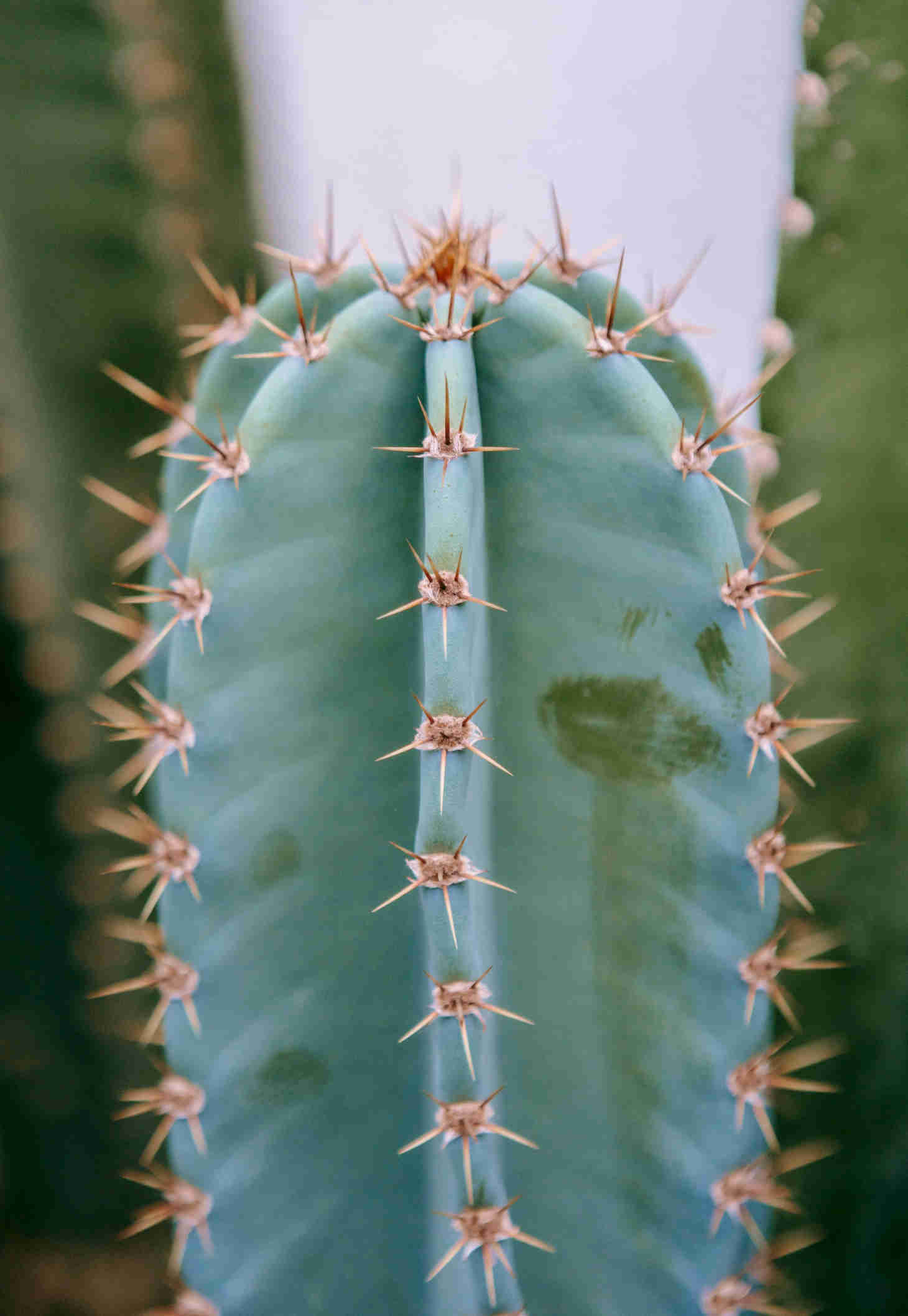
These areoles can be found in a variety of patterns. The areoles in some species, such as the saguaro and ball cactus, form along prominent ribs that run the length of the stem. In cacti that have raised bumps called tubercles, the areoles are found at their tips. Some cactus species have grooves on the upper surfaces of their tubercles and these grooves actually extend from the areoles themselves.
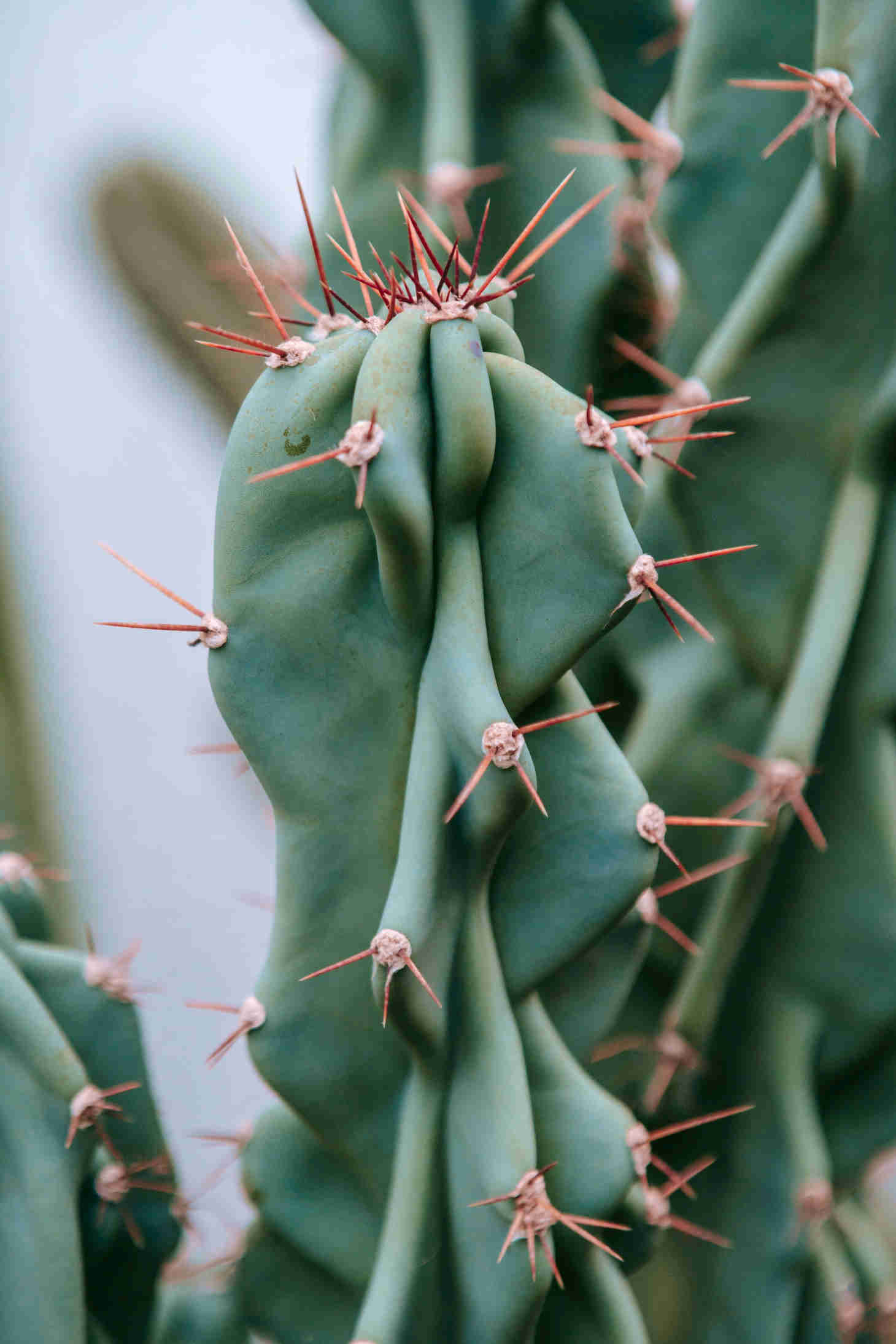
One of a cactus’ most recognizable characteristics are the spines that sprout from its areoles. Spines, which are simply modified leaves, shield the cactus from predators and provide shade from the sun. The spines on a cactus can be broadly classified into two main types: centrals and radials. Centrals are typically thicker, possess deeper pigmentation, and often have a hooked shape, whereas radials are usually straight and grow around the centrals.
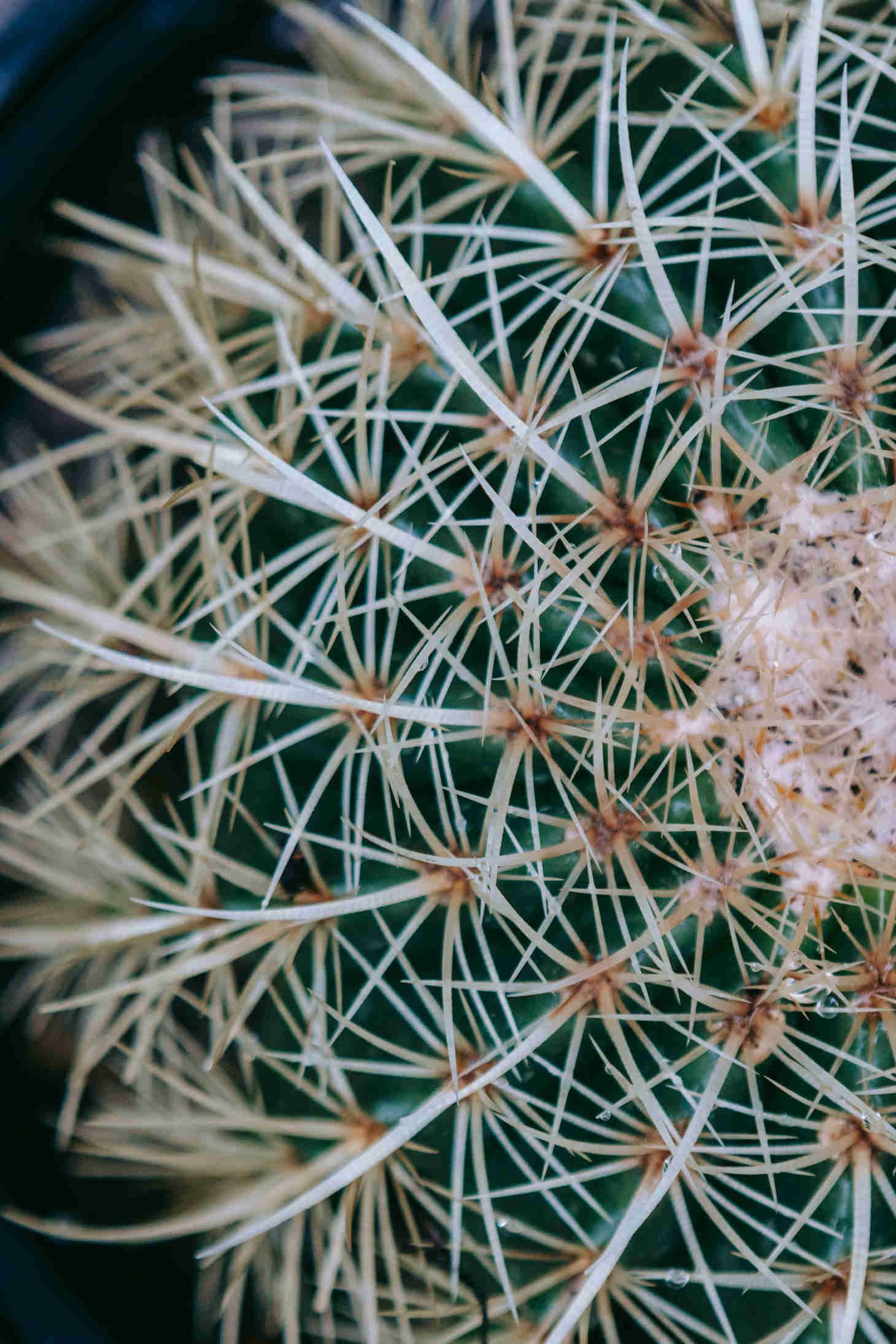
Spines are absent in tropical cacti like the Christmas cactus and orchid cactus due to the relatively sheltered surroundings offered by the host plant, rendering spines unnecessary for protection.
While not all cacti produce flowers, those that do showcase a variety of distinctive and vibrant blooms. Cactus flowers exhibit an impressive diversity in terms of form, size, and color. For instance, the fishhook cactus has tiny, vivid flowers, while others, like the saguaro cactus display magnificent, grand blossoms. Once in bloom, these flowers attract pollinators, ranging from bats and birds to tiny insects.
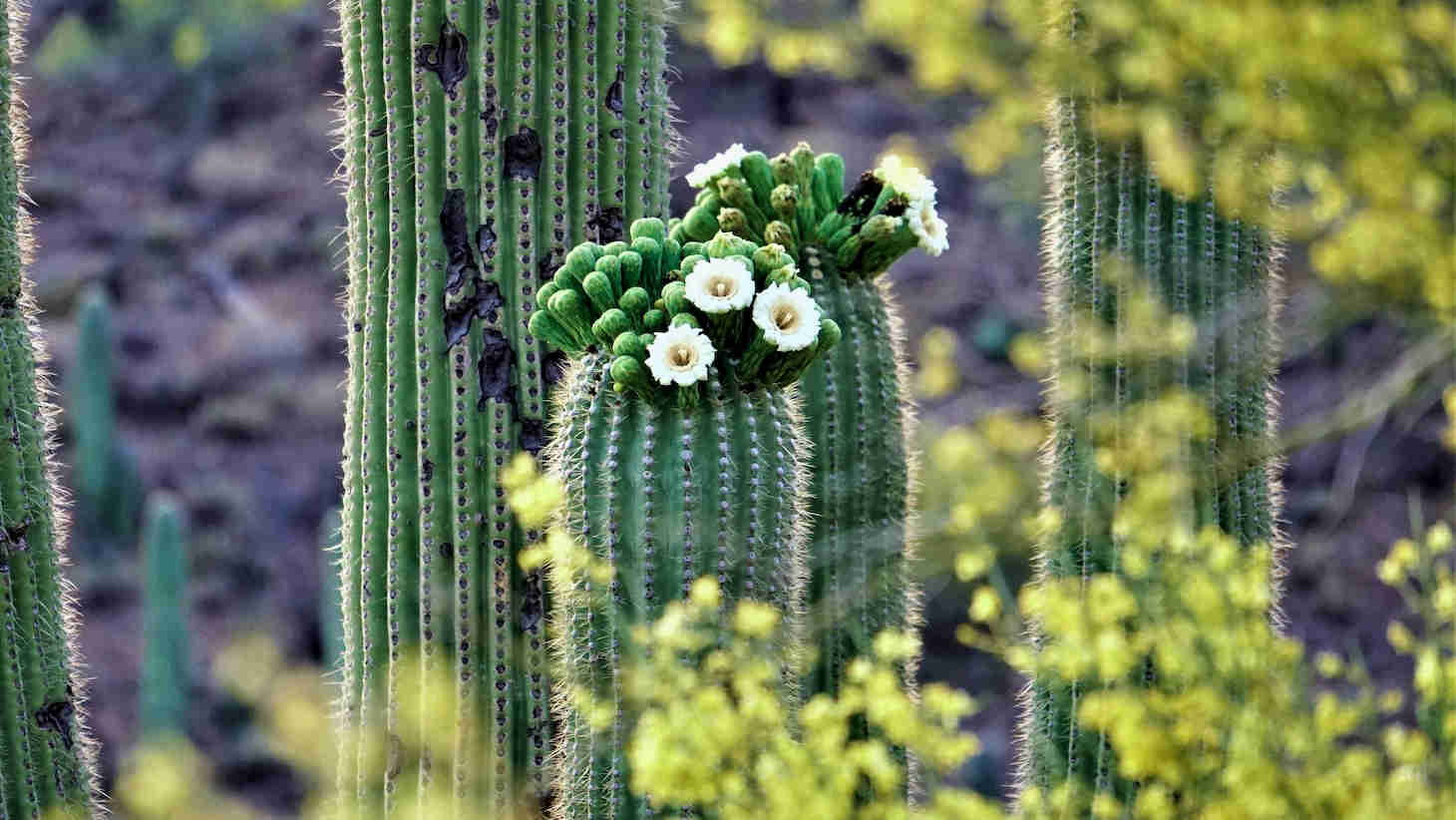
cactus plant parts and how each part helps cactus#shorts #education
FAQ
What are the parts of a cactus called?
Cacti consist of several key parts that facilitate their survival in parched landscapes. These components include areoles, flowers and buds, meristems, spines and glochids, root systems, and stems. Each part plays a vital role in the cactus’ overall success within its ecosystem.
What are the roots coming out of my cactus?
Similarly, the plant may develop aerial roots because it is reaching out to find more water or nutrients. Water the plant deeply whenever the top 1 to 2 inches (2. 5-5 cm. ) of potting soil feels dry to the touch. Water sparingly during fall and winter, providing just enough moisture to keep the plant from wilting.
What are the paddles of a cactus called?
To be a cactus, the plant must produce flowers with the following characteristics: many tepals (combined sepals and petals) that intergrade with each other; many stamens (usually hundreds), and numerous stigma lobes (rarely only three).
What is the trunk of a cactus called?
STEM. · What do you call the “trunk” of a saguaro? ( stem)
What are the main parts of a cactus?
We will talk about the main parts of a cactus and how they help it stay alive in this article. The stem, also known as the “body” of the cactus, is the most distinctive part of the plant. Unlike other plants that have broad leaves, cacti have evolved to have modified stems that are capable of carrying out photosynthesis.
What is a cactus anatomy?
Before we get into the specifics of cactus anatomy, it’s important to know how a normal cactus is put together. Like most plants, cacti have roots, stems, and leaves. But their leaves have been changed to have spines or scales on them to help them save water in their dry environment.
Do cacti have different parts?
Cacti are not your typical garden plants. They have some very unique parts that make them stand out from shrubs and other plants. While cacti do share some basic parts with other plants like roots, flowers, fruits, stems, and leaves, they also have three really cool and distinctive parts that we’re going to explore. 1. Areolas
What does a cactus plant look like?
This vital part supports the entire plant and varies in shape among different species. While many cactus plants remain columnar (often later tending toward branching, dependent on the type), some develop globose, cylindrical stems, while others flatten out into pads known as cladodes.
What are the characteristics of a cactus?
The stem of a cactus is usually thick and fleshy, allowing it to store water and withstand harsh conditions. Another important part of a cactus is its spines. These are modified leaves that have evolved to protect the plant from predators and reduce water loss. Spines can vary in size and shape depending on the species of cactus.
What is a cactus stem?
The stem is the main photosynthetic organ of a cactus plant It is thicker and more succulent than the stems of most plants due to the water-storing tissue inside This enables cacti to survive long periods of drought. Cactus stems come in different shapes: Flattened oval pads are found in prickly pears and cholla.
